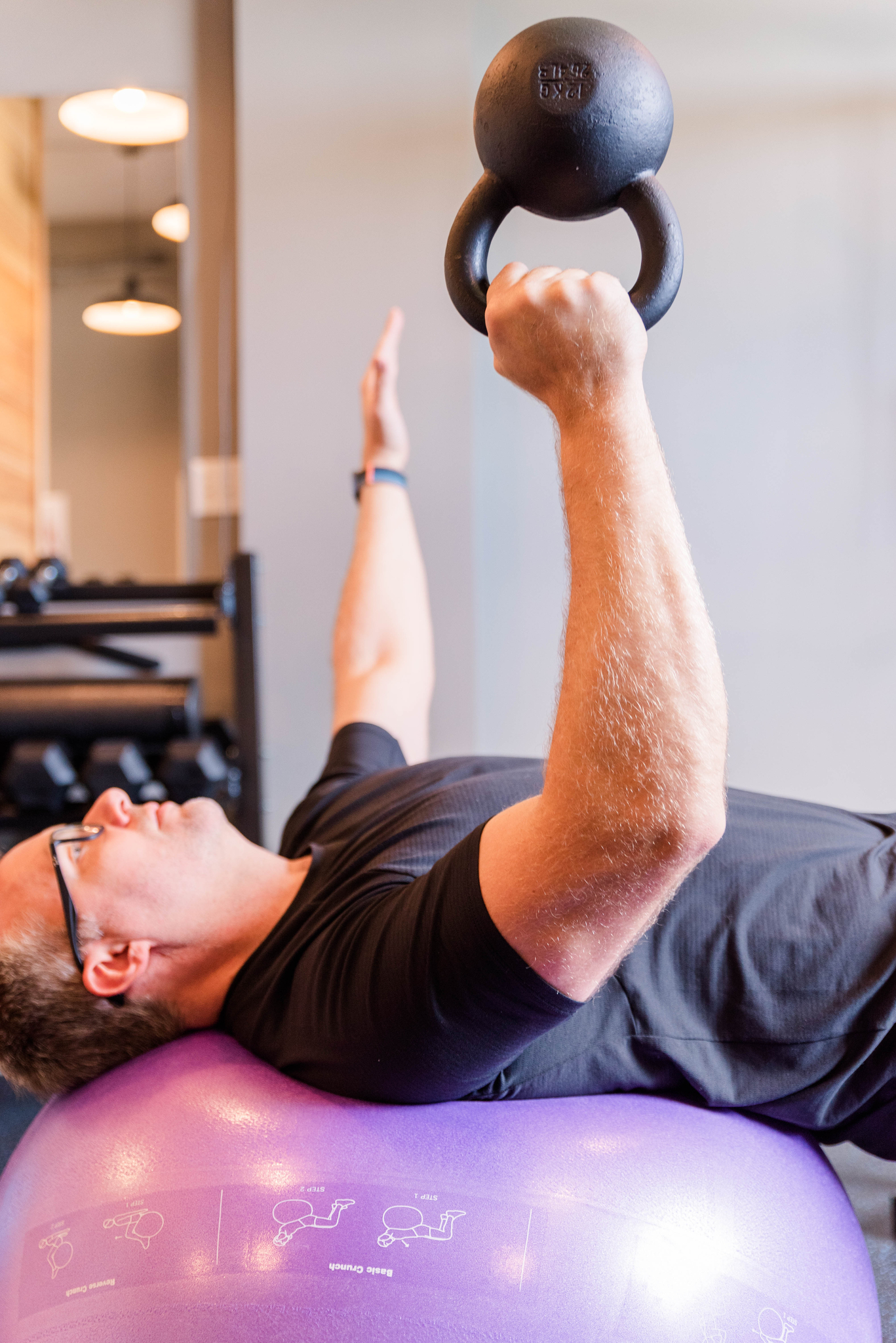Balance Core Strength Equipment
May 2nd, 2024
Our Guide to Kettlebells: What, Why & How
When it comes to fitness equipment, the best tools boil down to preference. Some trainees thrive in traditional gyms, where rows of weight and cardio machines take precedence, while others prefer the versatility and convenience of in-home training equipment like resistance bands, dumbbells, or medicine balls. Several factors, including fitness goals, current fitness level, and any physical limitations, should be taken into account when selecting the fitness tools that make the most sense for you.
Today, we’ll be profiling one of our in-home and virtual personal trainers’ favourite pieces of equipment: the kettlebell. “Kettlebells are one of the most dynamic pieces of home gym equipment that you can have in your fitness toolbox. Not only are they great for strength training, but they’re perfect for adding an extra challenge to HIIT or cardio workouts” (Men’s Health, 2024).
WHAT IS A KETTLEBELL?
Kettlebells are cast-iron orbs with triangular handles. The exact origin of the kettlebell is unknown, but it’s believed they first emerged in the 18th century. “Originally used as farm tools in Russia, kettlebells were reinvented as an exercise weight after strongmen performers used them in impressive feats of strength” (Healthline, 2024). Since then, kettlebells have gained popularity worldwide, becoming a staple for gyms, fitness centres, and in-home and virtual personal trainers for their effectiveness in building overall fitness.
KETTLEBELL BENEFITS
Unlike many traditional weightlifting exercises that isolate specific muscle groups, kettlebell movements excel at engaging multiple muscle groups simultaneously (making them a compound exercise – click here to read more about these and why we love them), masterfully providing a full-body workout in a single session.
From weighted squats and asymmetrical lunges to power swings and cleans, kettlebell exercises promote functional strength and coordination. The traditional kettlebell workout is also notorious for its high-intensity intervals, making it an excellent tool for cardio, improving your stamina and endurance over time. “Many kettlebell exercises are dynamic, often ballistic, meaning fast lifts rather than the slow and controlled strength training most of us are used to doing” (Very Well Fit, 2020).
These movements often require stabilization of the core to maintain proper form and balance. Consistent kettlebell training can improve posture, reduce lower-back pain, and enhance athletic performance. Nielsen Fitness in-home and virtual personal trainers often utilize kettlebells for efficient, express workouts to complement our clients’ busy schedules.
OUR FAVOURITE KETTLEBELL MOVES
Kettlebell Swings: Start by standing with your feet shoulder-width apart, grasping a kettlebell handle with both hands. Next, hinge at your hips and swing the kettlebell back between your legs, then drive your hips forward to propel it upward to chest level. Swing the kettlebell back between your legs and repeat. Remember to keep your spine neutral (an in-home or virtual personal trainer can monitor this) and drive the swing with your lower body; your arms are only holding the weight. This exercise works your core, glutes, hamstrings, spinal erectors, and upper back while providing cardiovascular challenge and improving your power (speed and force).
Goblet Squats: Grasp a kettlebell handle with both hands and hold it close to your chest, packing (retracting) your shoulders and keeping your elbows pointed down. Lower into a squat position, keeping your chest up and your knees tracking over your toes. Push through your heels to return to the starting position and repeat. This exercise works your quads, calves, glutes, and core while building your grip strength and posture.
Turkish Get-Ups: Lie on your back with a kettlebell in one hand, arm extended toward the ceiling. Bend your knee on the same side as the kettlebell and plant your foot on the floor. Use your free hand to prop yourself up onto your opposite elbow, then onto your hand. Lift your hips off the ground and sweep your straight leg under your body, coming into a kneeling position. Stand up while keeping the kettlebell overhead, then reverse the movement to return to the starting position. This exercise works your glutes, traps, lower back, core, hamstrings, triceps, lats, and calves.
OUR TIPS & FINAL WORDS
If you’re new to kettlebell training, starting with the basics and focusing on mastering proper form and technique is essential. Begin with lighter kettlebells to familiarize yourself with the movements before gradually increasing the weight as you progress.
A certified in-home or virtual personal trainer can help ensure safe and effective training. If you’d like help incorporating kettlebells into your routine – or with any other fitness goals – we’re here for you. We offer in-person training in Toronto, Collingwood, Ottawa & Hamilton and virtual personal training everywhere. First workouts are zero pressure and always free – you can book yours here.

